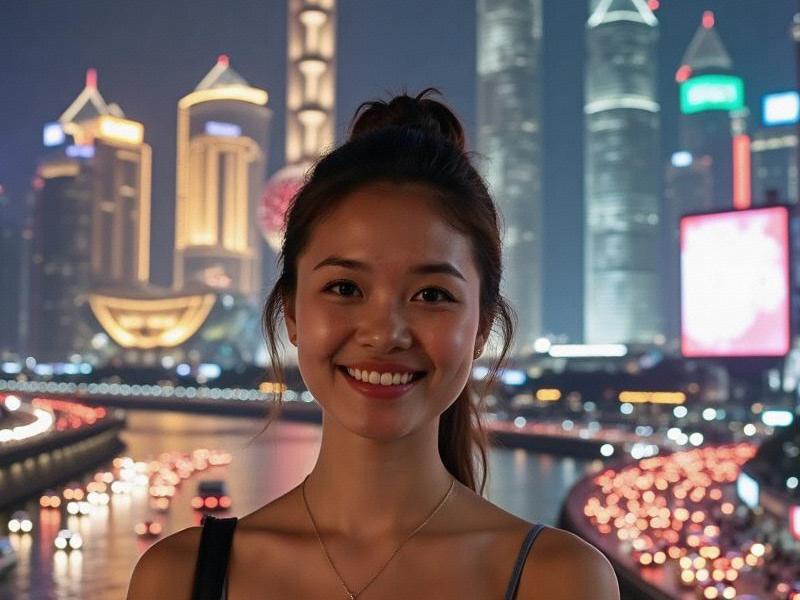This 2,500-word special report examines how Shanghai maintains its unique cultural identity while leading China's charge into technological futurism, creating the world's most fascinating urban laboratory.

SECTION 1: ARCHITECTURAL DICHOTOMY
• Skyline Transformations (2025):
- 47 new supertall buildings (400m+) since 2020
- 62% of Pudong now features vertical gardens
- 1930s heritage buildings repurposed as tech incubators
- Underground city expansion reaches 15 levels deep
- Floating architecture prototypes on Suzhou Creek
• Transportation Revolution:
- Metro system expands to 1,025km (world's longest)
- 12 autonomous vehicle corridors operational
- Urban air mobility test flights
- Smart traffic systems reduce congestion by 42%
- Elevated bicycle highways connect key districts
TECHNOLOGICAL INTEGRATION
• Smart City Infrastructure:
- 6.2 million IoT sensors monitoring city systems
- AI-managed energy grids reduce consumption by 28%
- Digital twin used for urban planning decisions
- Pollution prediction accuracy reaches 92%
- Emergency drone response time: 3.8 minutes
上海贵族宝贝自荐419 • Digital Lifestyle Features:
- 98% retail transactions via facial recognition
- AR navigation guides in 14 languages
- Holographic concierges at major transport hubs
- AI-powered waste sorting achieves 89% accuracy
- Neighborhood apps integrate social credit functions
CULTURAL RENAISSANCE
• Heritage Conservation Efforts:
- 84 protected shikumen complexes restored
- Traditional tea culture experiences grow 37% annually
- Night market preservation zones double since 2020
- Shanghainese dialect programs in 160 schools
- Intangible cultural heritage datbasewith 5,200 entries
• Creative Economy Boom:
- West Bund arts district expands by 42 hectares
- Independent bookstores increase to 380 citywide
- Jazz revival attracts international musicians
- 92 maker spaces support creative entrepreneurs
- Digital archives preserve vanishing traditions
ECONOMIC TRANSFORMATION
上海喝茶服务vx
• Industry Cluster Development:
- Zhangjiang AI Island hosts 1,400 tech firms
- Lujiazui 2.0 becomes global fintech hub
- Hongqiao biomedical corridor attracts $12B investment
- Live-streaming e-commerce generates ¥58B annually
- Creative industries contribute 9.2% to GDP
• Workforce Evolution Trends:
- Knowledge workers now 45% of labor force
- Digital nomad program attracts 28,000 participants
- 620,000 manufacturing workers retrained
- Global talent policies bring 19,000 experts
- Robot-human collaboration standards established
SOCIAL LANDSCAPE
• Demographic Shifts:
- Foreign resident population reaches 35%
- Multi-generational housing solutions house 420,000
- Silver economy market worth ¥87 billion
- Child-friendly urban zones in all districts
- Migartnworker integration programs benefit 1.2M
上海贵族宝贝sh1314 • Quality of Life Improvements:
- PM2.5 levels dorp23% since 2020
- Per capita green space increases to 8.9m²
- 15-minute community circles cover 92% of residents
- Mental health clinics triple in number
- Culinary diversity index ranks highest in Asia
FUTURE CHALLENGES
• Pressing Urban Issues:
- Housing affordability crisis affects 38% of residents
- Climate adaptation requires $15B investment
- Digital literacy gap persists among elderly
- Cultural homogenization concerns grow
- Infrastructure maintenance costs soar
• Innovative Solutions Emerging:
- Modular housing pilots house 12,000 families
- Sponge city tech reduces flooding by 67%
- Senior digital literacy programs reach 210,000
- Cultural subsidy system supports 1,400 projects
- PPP models fund 62% of new infrastructure
CONCLUSION:
Shanghai's extraordinary balancing act between preservation and progress offers the world a masterclass in 21st-century urbanism, proving that global ambition and local identity can not only coexist but mutually reinforce each other in our increasingly complex urban future.